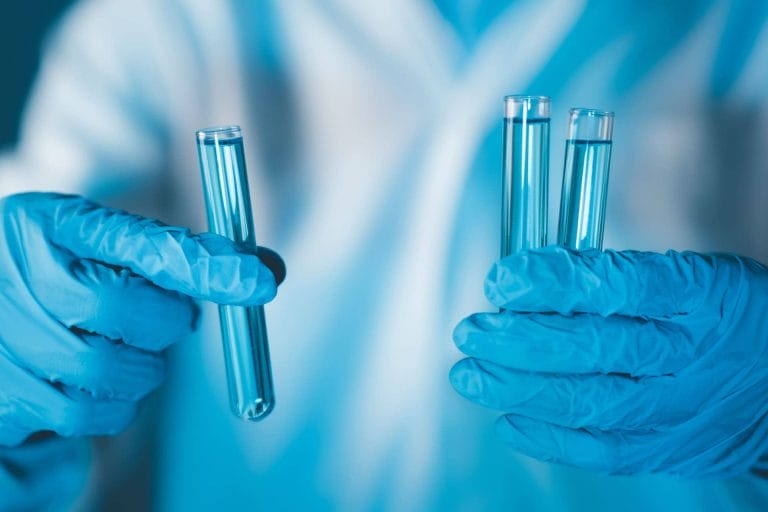Previously we informed about the NANOMET Workshop on the subject OECD Guidance (DG) 317 on aquatic and sediment toxicity testing of nanomaterials.. At the end of last week, another NANOMET online seminar took place. There, the scope, content and practical application of the Test Guideline (TG) 318 was discussed. It focused in particular on the determination of the dissolution rate, but also on the stability of the dispersion for toxicity tests, which were performed in the Guidance Document 318.
Currently, unlike the last presentation of DG 317, there is unfortunately no publicly available recording of the online seminar. Update: In the meantime, the corresponding recording has been uploaded and is now publicly available on YouTube. We have embedded the YouTube video below.
Da wir jedoch bereits informed about the OECD Guideline 318 in einem unserer früheren Beiträge – auch mit einem Link zu unserer entsprechenden Videopräsentation (oben) – möchten wir Sie heute über den Umfang und den Inhalt des 53 Seiten starken Begleitdokuments GD 318 informieren.
Scope of OECD DG 318
The dissolution rate, but also the dispersion stability of nanomaterials in the environment are very important parameters. These ultimately affect their fate and thus have a direct impact on the assessment of their environmental risks. Since dissolution rate and dispersion stability are often interdependent, an overarching guidance document linking these factors was needed. This is now presented by OECD DG 318.
The document deals with methods for evaluating the dissolution rate and dispersion stability of nanomaterials in aqueous environmental media. It is relevant for nanosolids, but also for their aggregates and agglomerates. Specifically, the GD provides guidance on the influence of different experimental conditions on the performance and results of the methods used. In addition, modifications and/or additions to these methods are discussed in the document.
OECD DG 318 content [reference to the relevant chapters].
1. flow-through and test-bench methods for determining solubility and dissolution rate [Chapter 2].
2. specific guidance on TG 318 [Chapter 3]:
- Additional experimental conditions
- Support for consideration of heteroagglomeration.
- Derivation of fastening coefficients
- Guidelines for the interpretation and presentation of data related to the endpoint.
3. the use of the obtained data for further fate and effect tests / evaluation strategies and the influence of two endpoints on each other, e.g. dispersion stability on dissolution rate and vice versa, is discussed [Chapter 4].
4. recommendations for the use of baseline data to derive input data / parameters for exposure modeling [Chapter 5].
5. use of the DG with respect to other [future] OECD TGs and DGs [Chapter 6].
- Aquatic and sediment toxicity testing
- Accumulation potential of nanomaterials in fish
- Estimation of fate in soil and sediment: advice on screening options for dispersion stability and dissolution rates under different environmental conditions.
Here is a link to the document on the OECD website..
Contact us if you have any questions, need a consultation, or if you would like us to conduct the study for you.
We have experience and have the appropriate equipment ready for you.
Also feel free to like or share the video above if you would like to see more nEcoTox content on Youtube.
Mail to: seitz@necotox.de or call +49 6346 9661491
picture by Republica on Pixabay





